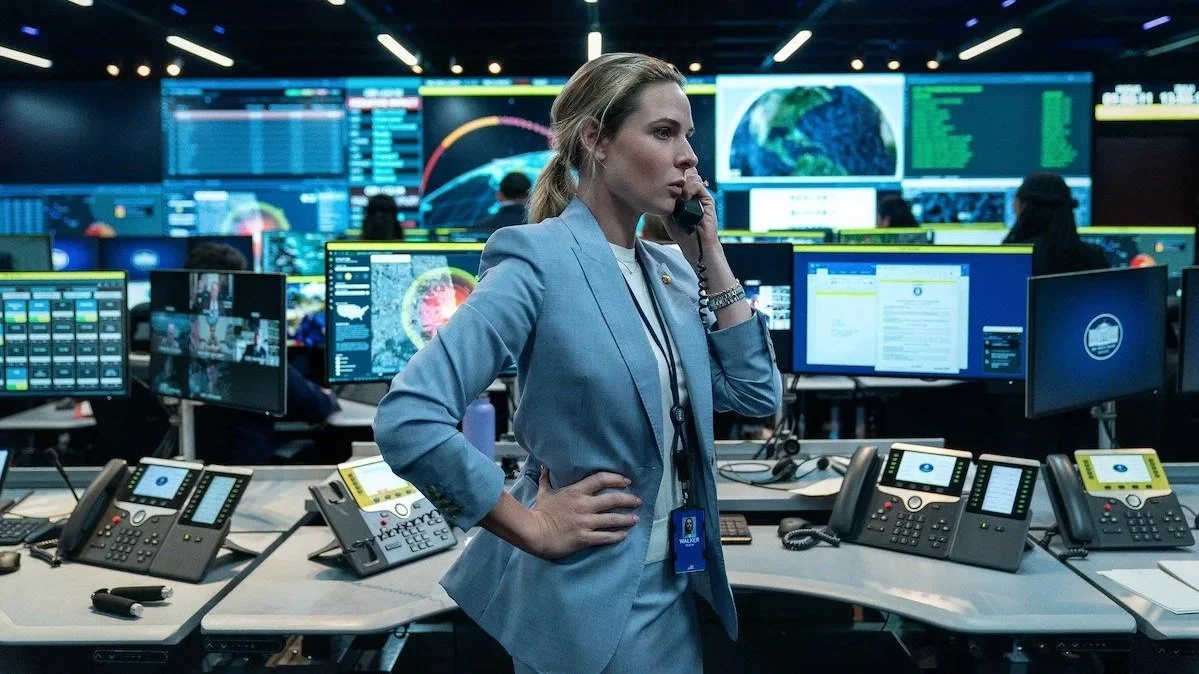A House Of Dynamite Director and Cast Talk Expert Input, Emotional Score, and Shifting Perspectives
Netflix’s new political thriller A House Of Dynamite follows an unidentified missile coming towards the United States as officials scramble to take action. Director Kathryn Bigelow and writer Noah Oppenheim sat down for a press conference with cast members Rebecca Ferguson, Tracy Letts, Anthony Ramos, and Jason Clarke, along with editor Kirk Baxter and composer Volker Bertelmann, to talk about making the film.
The story of the film takes place over 18 minutes and Bigelow explained how they crafted the different perspectives viewers will see during the film. “We decided to break it into three chapters in order to stay in real time and, because an 18-minute journey would have been, obviously, too brief for a feature,” Bigelow said. “We broke it into three phases in order to do a deep dive in each one of the halls of power as you climb up the food chain.”
Oppenheim added: “The reason we constructed it that way […] was so the audience could feel what that pressure of 18 minutes would be like and experience the disorientation that the decision-makers would feel when something like this would first happen. You know, you would hardly be able to make sense of it in those 18 minutes. In the first watching, the audience is absorbing it in that way. Then, we pause and they have an opportunity now to re-experience it with new context. Unfortunately, in real life, the folks who have to make these decisions don't get the luxury of a second or third run-through.”
When portraying an intense situation like this, Kathryn made it her mission to stick to the accuracy and realism of it. They made sure to speak to real people who have been in these rooms to get it right. “If you're going to take an audience behind closed doors, if you're gonna take them to the Situation Room, into Strat-Comm, you want to accurately portray what goes on there,” Oppenheim emphasized. “From the very beginning when we started working together, Kathryn made it clear to me [that] if you're gonna write dialogue in the mouths of these people, it better ring true. Every line, she interrogated, ‘Is this how it would really happen? Is this how they would really say it?’ We did a lot of work in advance talking to people who held these jobs, who had been in these rooms before, so that we could try to accurately reflect how it would unfold. And then these extraordinary performers absorbed that sense of responsibility from Kathryn and we all relied on those Technical Advisors.”
Bigelow emphasized how key those technical advisors were to her film. “They would be with me on the set and we didn't shoot anything that they didn't say, ‘Okay, that is relatively accurate,’” she said. “Authenticity is paramount in something like this. If you're inviting an audience into space that's not readily available, especially a story like this, you need it to be as authentic as possible.”
Ramos touched upon how that help shaped his character beyond the script. “Everything was specific. We'd have these moments where it wasn't about the lines you were saying. It was about what you were doing when you weren't talking,” he said. “How your body was moving? What was happening on that monitor? Who's looking at who? When news is given about something, who's making eye contact with who? […] it was like, what was happening in between the lines. We had moments where we'd say, ‘Hey, would I answer the phone? Would I pick the phone up? Or would I answer it on the headset?’ Everything was so thought through and specific. And that's all Kathryn. She was super locked-in on all of that.”
Due to the nature of the film, Bigelow and Oppenheim were surprised by one conversation they had with a former U.S. government official who had served in senior roles at the Pentagon and CIA about nuclear weapons. “The movie is predicated on this notion that the president of the United States has the sole authority to decide whether to use nuclear weapons. It's only up to him in our system,” Oppenheim stated. “So we asked this former official, how much does the president practice? How much does he read on the subject? How much does he prepare for that moment? And the person's response was, ‘Not at all.’ Basically that when the president takes office, any president, it's not specific to any individual, they're given a very short briefing on the briefcase that gets carried around, less than an hour sometimes. And that's it. Then they don't think about it ever again. So the fact that the folks at the top of the decision-making ladder, the president, the secretary of defense, might be the least prepared for the moment I think was stunning to both of us when he shared that.”
Bigelow followed: “It's just shocking. I mean, we were completely surprised by that. He said, ‘No, there's so much else that they're doing.’ Like, their day is so filled that the idea of stopping everything and going through this protocol was not even possible to consider. Yet, at StratComm, when we visited, there was like this admiral that we saw and she said they practice the protocol for nuclear weapons 400 times a year. So they're very practiced. On the other hand, the president is not, which was another paradox. It was very surprising.”
From cult favorite The Hurt Locker to Detroit, Bigelow has created a massive career for herself that her cast took time to dote on what it’s like to work with her. “She gave us space. She gave us information. She gave us the people,” Ferguson stated. “Greg Shapiro, who's one of the producers, would hand over numbers and details so that we could do the research.”
Ferguson continued: “Three cameras were rolling and you didn't know which angle she was going to take. She's like a composer. It's like someone playing music,. […] You look at her behind the monitor. You can see that she's feeling things. It's not micromanaging a scene. It is catching an emotion that feels authentic for that moment. So, it's very freeing. It's scary because you know that you have a moment to offer her. She will grab it if it's good, but she also grabs something else if it's better.”
Letts, who plays the senior military officer in charge of StratCom, also talked about the calmness Bigelow exudes. “It was a tough gig. Kathryn's just the calm at the center of the storm. She's just completely calm and, also, interrogating the thing with you,” he said. “I always felt I could turn to Kathryn with a question or even to just stop the proceedings and say, ‘Wait a minute, I don't understand what we're doing here. What is this moment supposed to be about?’”
Bertelmann, responsible for the film score, discussed the challenges in developing the emotion with the three different perspectives the film showcases. “Sometimes I get lost when I see it for the first time. I'm feeling very impacted by the emotions. I just have to wait two hours after that to start writing music because I'm shocked or I'm feeling, you know, human life is so worthy,” he explained. “To actually transport that into the music. At the same time, there's tension and there is pressure. To combine these two things, it was a little bit of a challenge. But Kathryn works with the musician as she works with the actors, I think. So I'm very free to work in my way. That makes it so much more intense for me.”
Utilizing his journalism career to create the script, Oppenheim shed light on the people behind these pressing topics. “There is this incredible community of policy experts and journalists who think […] and write about the nuclear issue and have been for decades,” he said. “One of the things Kathryn has mentioned about her motivation to make the movie is that the general public, unfortunately, has largely seem to have forgotten that we live in a world where there are weapons on a hair trigger that could end all of civilization in a matter of minutes. That's a great luxury, I suppose, for most of us to ignore that. But there is this incredible group of hardworking people who think about this every day and try to find solutions and write about it and draw attention to it. So just the relationships that I had to be able to speak to them and draw them into this process was really helpful.”
Adding onto this notion, Bigelow hopes that audiences watching the film become more aware of the nuclear weapon conversation. “How the film ends, it's an invitation to the audience to take away something. My hope is engaging in a conversation about nuclear weapons,” she said. “There's nine nuclear countries and only three are members of NATO. I mean, that in and of itself should kind of give everyone pause. So it's really an opportunity and a reach out to the audience to then hopefully take the conversation further.”
You can watch A House Of Dynamite when it hits Netflix on October 24.






